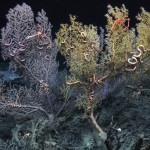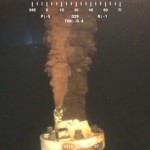REPOSTED FROM MAY 2008
![]() When a scientist is writing a scientific paper we look for that one quintessential figure that tells the whole story. Other figures are ancillary to fill in the specifics but the ‘cardinal figure’ is where all the meat of the paper is distilled to one remarkable graph. A senior scientist once told me that deciding on and constructing this figure is the hardest part of writing the paper. After the “cardinal figure” everything else writes itself.
When a scientist is writing a scientific paper we look for that one quintessential figure that tells the whole story. Other figures are ancillary to fill in the specifics but the ‘cardinal figure’ is where all the meat of the paper is distilled to one remarkable graph. A senior scientist once told me that deciding on and constructing this figure is the hardest part of writing the paper. After the “cardinal figure” everything else writes itself.
Think of the “cardinal figure” as manuscript feng shui. An off-balance figure with improperly aligned objects lead to paper disharmony. Bad figure…bad paper moojoo.
I mention this because the paper I will expound on here presents a cardinal figure that truly exemplifies a “picture is worth a thousand words”. It does so well at conveying the message little more commentary is needed. I merely, and humbly, fill in the details.

So the details not on the graphs… Whales here is killer whales. The AB Pod is a resident pod in Prince William Sound. You can clearly see both in terms of number and reproductive value they are not doing so well. You might also notice that 1989 starts the downtrend. What happened in 1989 you might ask? On March 24, 1989, the supertanker ‘Exxon Valdez’ ran aground on Bligh Reef in northeastern Prince William Sound, Alaska, spilling 42 million liters of crude oil, the largest oil spill in USA history.
The oil was most volatile and produced the most aromatics in the weeks immediately following the spill (Spies et al. 1996), and inhalation of oil or concentrated aromatics is extremely toxic (Griffiths et al. 1987, Geraci 1990, Neff 1990). Cetaceans are obligatory surface breathers and the large quantities of monoaromatic hydrocarbons evaporating out of the oil slick would have been most concentrated immediately above the water’s surface. Monoaromatics easily cross membranes in the lungs, and will be taken up rapidly, resulting in a narcosis response well documented in humans (Ainsworth 1960, Bass 1986). The fumes themselves may not have been directly lethal, but they could easily have caused marine mammals to lose consciousness and drown (St. Aubin & Geraci 1994). The acute response could have happened in minutes if monoaromatic concentrations were high. We believe that the 7 animals missing when AB Pod was thoroughly photographed 6 d after the spill likely died as a result of inhaling oil or its vapors. The effects of vapor or oil inhalation may range from instant death to sub-lethal damage to mild irritation, depending on concentration and length of exposure (Geraci 1990). If there were acute mortalities, then sub-lethal damage should have been prevalent as well. Inhaled hydrocarbons may inflame mucous membranes, cause lung congestion, lead to pneumonia and cause neurological damage and liver disorders (Geraci 1990, Neff 1990, Lipscomb et al. 1994).
Matkin, C., Saulitis, E., Ellis, G., Olesiuk, P., Rice, S. (2008). Ongoing population-level impacts on killer whales Orcinus orca following the ‘Exxon Valdez’ oil spill in Prince William Sound, Alaska. Marine Ecology Progress Series, 356, 269-281. DOI: 10.3354/meps07273






One Reply to “Orcas and Oil: Repost”
Comments are closed.